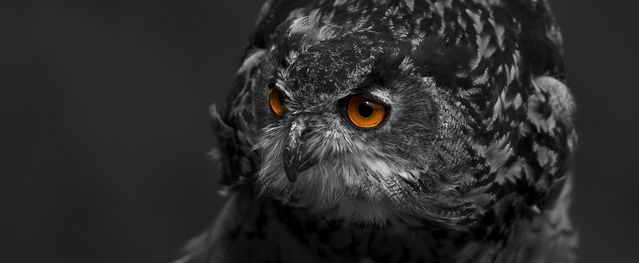
Sleep
What Hunter-Gatherers Tell Us About Natural Sleep Patterns
Did early bird and night owl behavior evolve as a strategy to avoid predators?
Posted August 21, 2017

We have learned a tremendous amount about sleep in the last 30 years, yet mysteries about its purpose and functions remain.
We do know critical physiological events take place during sleep that are necessary for maintaining health. Yet sleep itself is also a state of profound vulnerability, leaving animals relatively helpless to defend themselves and their offspring for stretches of time. Over evolutionary history, animals have developed myriad strategies to offset vulnerability risks, from sleeping in trees, to rapid transitions out of sleep, to sleeping in large groups.
Back in 1966, psychologist Frederick Snyder proposed the "Sentinel hypothesis." He suggested that there are some built-in physiological mechanisms to ensure that there's always at least one individual awake to keep watch for dangers in a group of animals.
This phenomenon has been observed in various creatures, like migratory birds. When a group of ducks settles down to sleep, birds that are situated on the outer edge of the flock will literally keep one eye open as a lookout for lurking predators!
But do we see this in humans?
To answer this question, we would need to be able to investigate what “natural” sleep looks like for humans—without iPhones, alarm clocks, medications, challenging work schedules, and other factors that confound such an investigation.
With the growing popularity of evolutionary medicine as a source of information for modern-living human health, there has been more interest in lifestyle characteristics of contemporary hunter-gatherers. For instance, the Hadza in Tanzania live in natural conditions, without electricity or heating and cooling systems, or other forms of technology that alter natural lifestyle patterns. Fortunately for humanity, they have been remarkably amenable to being poked and prodded for science, and thus researchers have looked at everything from their teeth to their intestinal bacteria.
Recently, anthropologists at the University of Toronto and the University of Nevada took a closer look at the sleep patterns of these people. This study not only sheds some new light on ancestral sleep and wake patterns but also has some interesting implications for those of us in the modern world. Let's take a look at the study and what they found.
STUDYING HADZA SLEEP
The researchers recruited a group of 33 Hadza volunteers from a bush camp located in Northern Tanzania. They gave these participants actigraphs—wristwatches with sensors that can detect light and motion—which are used to objectively measure sleep-wake patterns. Participants wore the actigraphs constantly for 20 days.
SENTINEL HYPOTHESIS SUPPORTED IN HUMANS
At first glance, the results appear unremarkable relative to modern-living human sleep. The average bedtime and wake time was around 10 pm and 7 am, respectively. But when the researchers took a closer look at individual-level data in the group, two interesting findings emerged:
- No one slept all the way through the night. Despite total sleep duration being comparable to sleep of humans in industrialized regions, Hadza individuals got up one-to-several times during the sleep period.
- There was significant variation between individuals in bed and wake times in this small sample. For example, some individuals would stay up past 11 pm and wake up after 8 am, while others went to bed at 8 pm and were up before 6 am. The strongest predictor of this timing disparity was age.
The fragmentation in individual’s sleep period, as well as the mismatched sleep schedules amongst the group, meant that there was someone awake at all times. Over the 20 days of observation, there was a grand total of only 18 minutes during which all adults were asleep at the same time. This means that more than 99 percent of the time—even in the middle of the night—someone in this small group was awake!
So, despite living in the bushlands, with predators and other dangers lurking around them, the Hadza do not appoint a poor sleepy soul to the night watch. Rather, there is always somebody awake to alert the group to danger—much like the Sentinel hypothesis would predict.
CHRONOTYPE WAS PRIMARILY PREDICTED BY AGE
As you know, humans—and many other animals—tend to sleep at night. However, observational research has revealed that there is some natural variation in the underlying circadian rhythms, which produces a range of slightly different sleep patterns. This sleep-wake timing preference is known as "chronotype." People at opposing ends of the chronotype spectrum are often referred to as either "larks" (individuals who usually wake up early in the morning and go to bed early in the evening), or as "night owls" (those who wake up late and stay up late). You can figure out your own chronotype by taking this questionnaire.
In the Hadza study, the chronotypes were primarily predicted by age, and it broke down in a way that is familiar to most of us: Older folks were typically morning larks, and the younger adult members of the group tended to be night owls. The authors speculated that chronotype variations may be an evolutionary adaptation to maintain a state of vigilance in communities of humans. In particular, familial groups with a mixture of young and old people will tend to have different sleep habits due to age-related changes in sleep patterns. Additionally, while age influences chronotype, it is also a heritable trait. Is it possible that genetic variants contributing to chronotype might also be a product of selection pressure like this? Seems plausible to me.
Societally, we tend to view these deviations from average sleep pattern behavior as disordered. One main reason for this is due to the impaired function that results from forcing these outliers to adjust to the typical workday or school day. We all know people who have trouble getting up and getting ready for work or school in the morning, or others who struggle to stay alert after it gets dark. But this study suggests that variations in chronotypes might be genetic relics of ancestral sleep patterns—something that helped our species survive in dangerous environments. Maybe the behavior itself, disconnected from the societal expectations and pressures, isn’t such a bad thing, health wise.
LIVING AGAINST THE CLOCK
In today’s world, many of us walk around in a fog, because our schedules don’t align with our bodies’ natural rhythms. This is known as “social jet lag,” and it is surprisingly common now. Research shows that on a week-by-week basis, up to 70 percent of the population suffers from at least one hour of social jet lag, and one-third may experience 2 hours or more.
And this likely takes a toll on our health. Nurses who work shifts that overlap with their preferred sleep time (either late or early) are at greater risk of diabetes, and every hour of social jet lag adds an 11 percent greater risk of heart disease (independent of the total amount of sleep). Social jetlag is also a predictor of body weight, and likely contributes to obesity.
Perhaps instead of battling our internal clocks, our culture should try to find ways to accommodate natural sleep-wake pattern variation, to the extent that it is possible to do so. For example, changing school start times to account for the delayed chronotype of adolescents seems like a promising strategy—a systematic review found that delaying school by an hour or less produced increases in weeknight sleep from 25 to 77 minutes. Similarly, we might want to try to adjust our work schedules (or even job choice) to suit our circadian rhythms. One study found that a work shift schedule tailored specifically to employees’ individual chronotypes improved sleep on workdays. This also enabled them to spend less time on their free days catching up on accumulated sleep debt. Sounds good to me.



